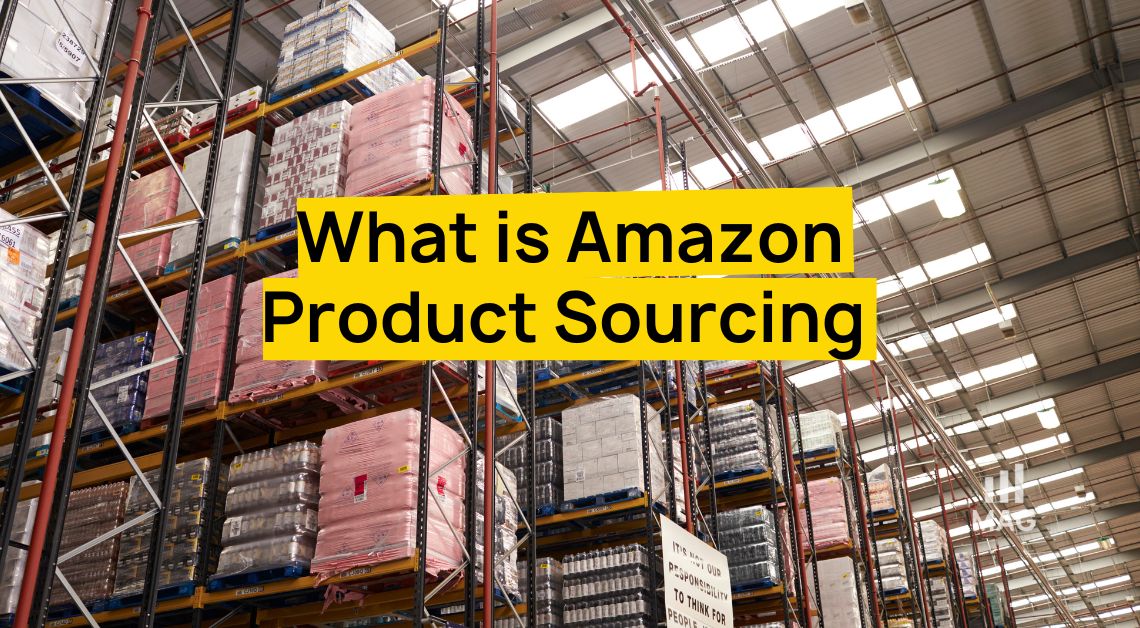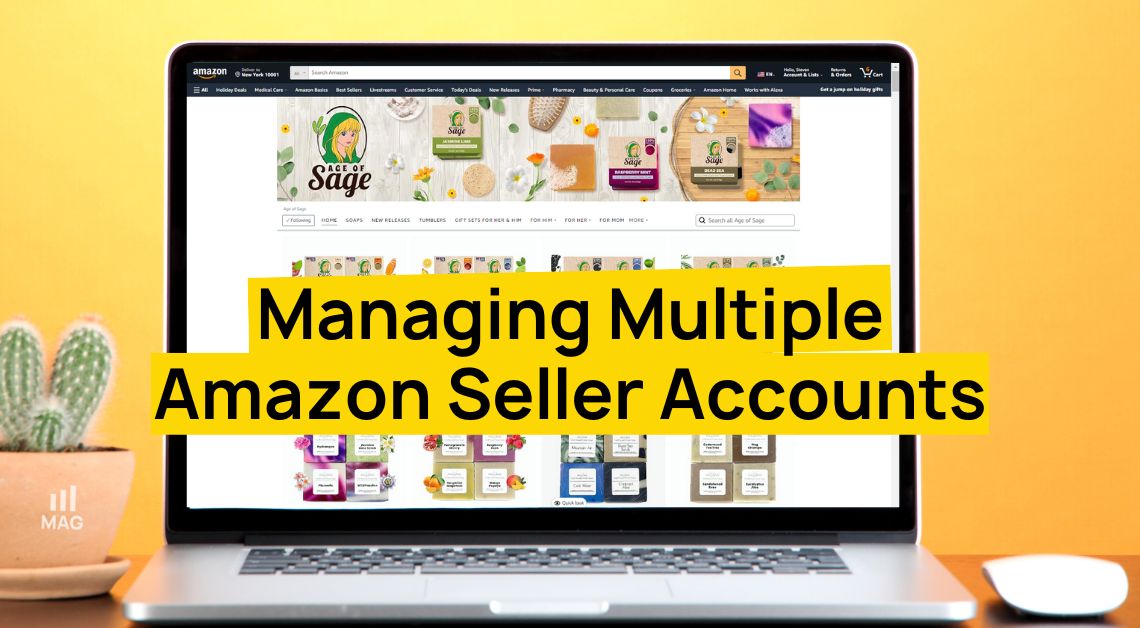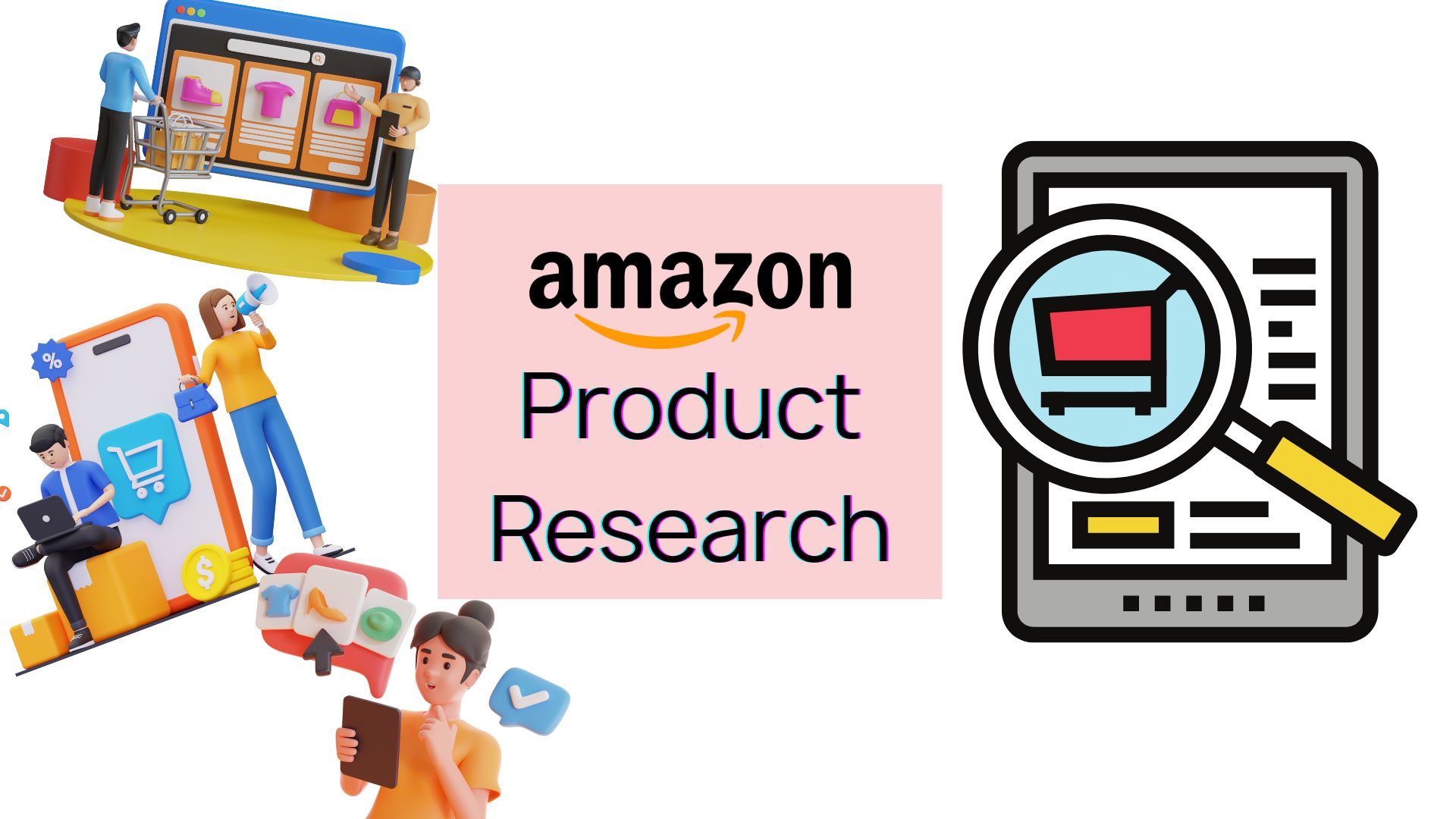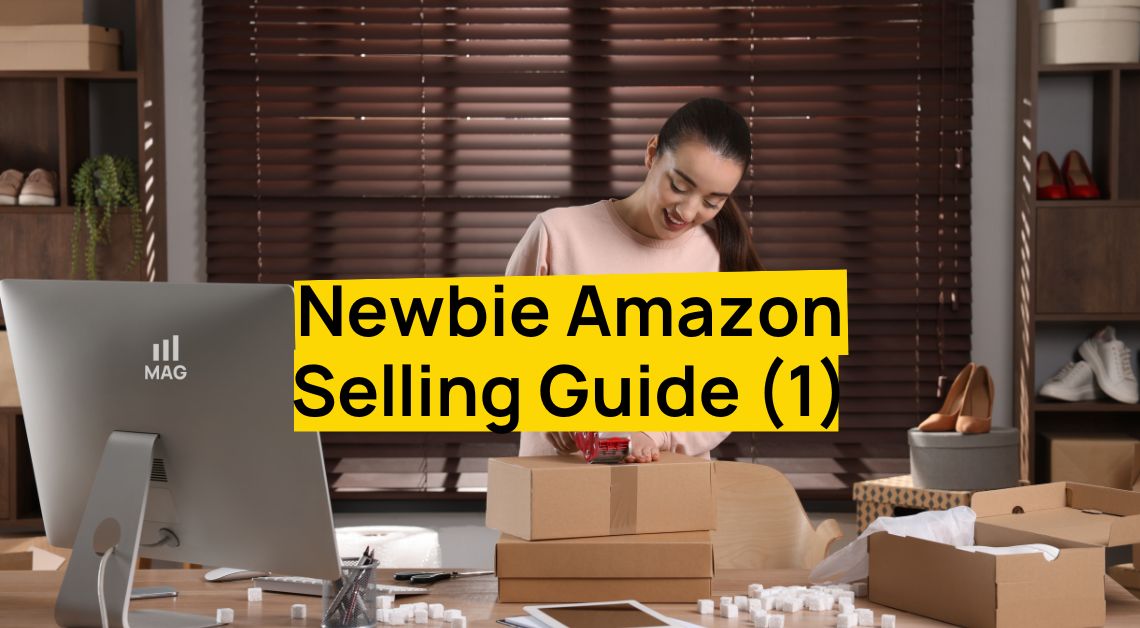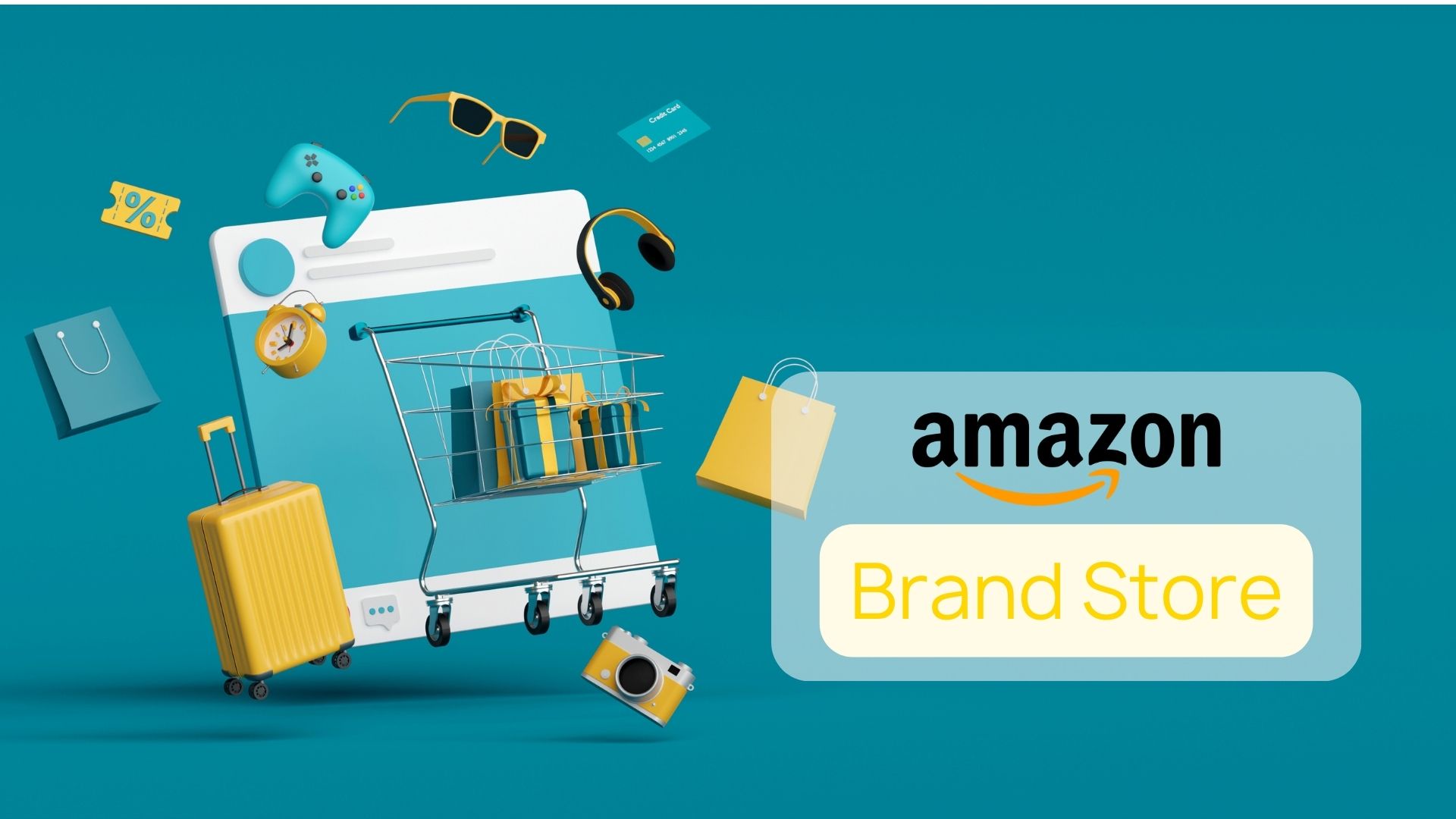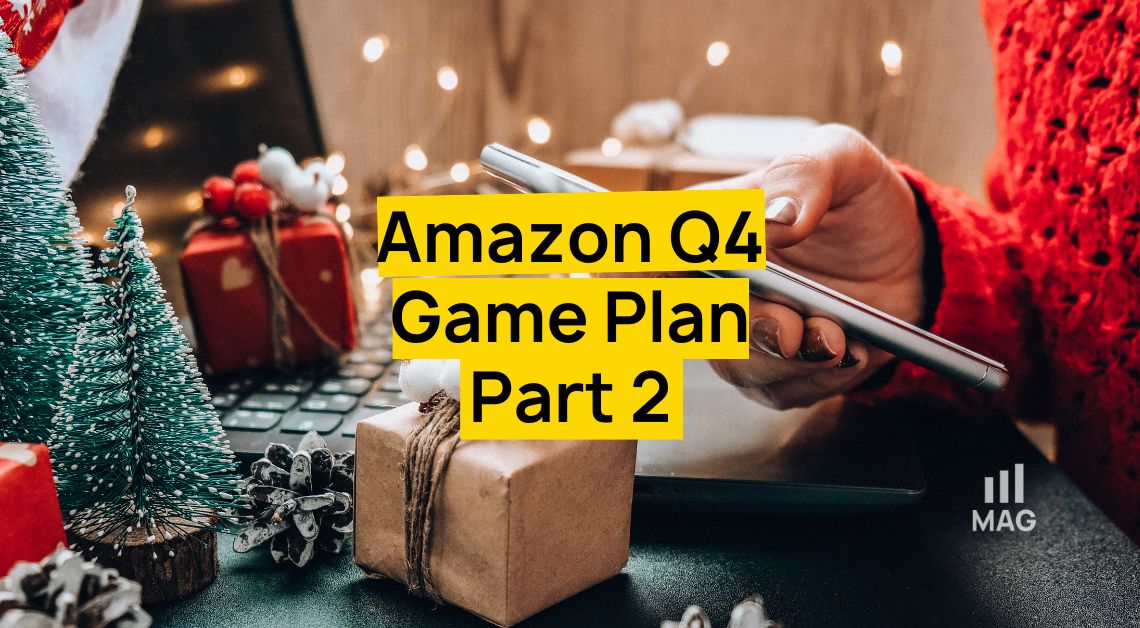Understanding Amazon FBA sales and revenue is crucial for someone starting to sell on Amazon because it directly impacts their profitability and overall success. Read on as we have organized the information and insights below to help you make informed business decisions.
When it comes to selling on Amazon, one of the most popular and effective fulfillment methods is FBA (Fulfillment by Amazon). But with its vast ecosystem and ever-evolving strategies, it’s natural to have questions about how to maximize sales and revenue on the platform. In this blog post, we’ll delve into the frequently asked questions about FBA selling, providing you with valuable insights and strategies to succeed on Amazon.
How Do I Earn From Amazon FBA?
To earn from Amazon FBA (Fulfillment by Amazon), you can follow these steps:
- Find a profitable product: Research and identify a product that has a demand in the market and can generate sales. Consider factors like competition, profit margin, and customer demand.
- Source your product: Once you’ve identified a product, you can source it from manufacturers, wholesalers, or through private labeling. Ensure the quality and reliability of your product source.
- Create a seller account: Sign up for an Amazon seller account on Seller Central. Choose the Professional selling plan, which allows you to sell in high volume and access additional features.
- Prepare your inventory: Prepare your products for shipment to Amazon’s fulfillment centers. Follow Amazon’s guidelines for packaging and labeling your products.
- Ship your inventory to Amazon: Use Amazon’s shipment creation tools to create a shipment plan and generate shipping labels. Then, send your products to Amazon’s designated fulfillment centers.
- Optimize your product listing: Create an appealing and informative product listing. Optimize your title, bullet points, description, and images to attract customers and improve your chances of appearing in search results.
- Set competitive pricing: Research your competitors’ prices and set your prices accordingly. Consider your profit margin, market demand, and competition when setting your pricing strategy.
- Drive traffic to your listing: Utilize various marketing strategies to drive traffic to your product listing. This can include running Amazon PPC (Pay-Per-Click) campaigns, optimizing keywords, and leveraging social media or influencer marketing.
- Provide excellent customer service: Respond promptly to customer inquiries, address any issues or concerns, and strive to provide a positive buying experience. Positive reviews and customer satisfaction can help boost your sales.
- Monitor and optimize: Regularly monitor your Amazon FBA sales and revenue, inventory levels, and customer feedback. Use Amazon’s data analytics and reporting tools to identify areas for improvement and optimize your listings for better performance.
Do You Sell More With FBA?
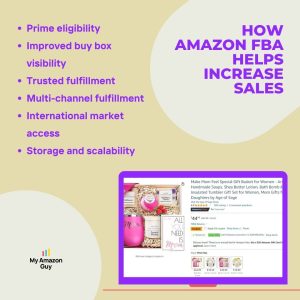
Aside from FBA, FBM or Fulfilled by Merchant is another fulfillment option available to Amazon Sellers. Compared to FBM, utilizing Amazon FBA can often lead to increased sales for sellers. This can result from
- Prime eligibility: By using FBA, your products become eligible for Amazon Prime, which offers fast and free shipping to millions of Prime members. This can significantly increase your product’s visibility and attract more potential buyers.
- Improved buy box visibility: Products that are fulfilled by Amazon tend to have higher chances of winning the buy box. The buy box is the prominent “Add to Cart” button on a product listing page, and winning it increases the likelihood of a sale.
- Trusted fulfillment and customer service: Amazon has a strong reputation for reliable and efficient fulfillment. By leveraging FBA, you can take advantage of Amazon’s expertise in logistics, warehousing, and customer service, which can enhance the overall customer experience and drive more sales.
- Multi-channel fulfillment: FBA allows you to fulfill orders not only on Amazon but also from other sales channels, such as your own website or other e-commerce platforms. This enables you to streamline your order fulfillment process and reach a wider audience.
- International market access: FBA provides international fulfillment capabilities, allowing you to sell your products to customers in different countries without the complexities of international shipping and customs.
- Storage and scalability: With FBA, you can store your inventory in Amazon’s fulfillment centers, freeing up your own storage space. Additionally, FBA offers scalability, allowing you to easily handle fluctuations in demand and seasonal peaks.
What Key Metrics Help Measure The Success Amazon FBA Sales And Revenue?
When measuring the success of your Amazon FBA sales and revenue, there are several key metrics you should track. Here are some important ones:
- Units Sold: This metric tells you how many units of your products have been sold over a given period. It helps you gauge the demand for your products and identify any fluctuations in sales volume.
- Conversion Rate: The conversion rate measures the percentage of visitors who make a purchase. It indicates how effective your product listings and marketing efforts are in converting potential customers into buyers. A higher conversion rate generally indicates better product listing optimization and customer engagement.
- Average Selling Price (ASP): The ASP is the average price at which your products are sold. Tracking this metric helps you understand the pricing dynamics of your products and their impact on your overall revenue.
- Gross Profit Margin: Calculating your gross profit margin allows you to assess the profitability of your products. It takes into account the cost of goods sold (COGS) and other associated costs, such as Amazon fees and shipping expenses. A higher gross profit margin indicates better profitability.
- Advertising Cost of Sales (ACoS): If you’re running Amazon PPC campaigns, tracking the ACoS helps you measure the effectiveness of your advertising spend. It represents the percentage of ad spend compared to the sales generated from those ads. A lower ACoS indicates more efficient and cost-effective advertising.
How Do I Calculate My Profit Margin In Amazon FBA?
Manual Calculation
- Determine your total revenue: This includes the selling price of your product multiplied by the total number of units sold. For example, if you sold 100 units of a product at a price of $20 each, your total revenue would be $2,000.
- Calculate your total costs: This includes all the costs associated with selling your product on Amazon. Some common costs to consider are:
– Cost of goods sold (COGS): This includes the cost of manufacturing or purchasing your product, shipping it to Amazon’s fulfillment centers, and any other associated costs.
– Amazon fees: These fees include referral fees, FBA fees, and any other fees charged by Amazon for using their platform.
– Advertising costs: If you’re running Amazon PPC campaigns or other advertising efforts, include those costs as well.
– Other expenses: This can include packaging materials, photography, and any other costs directly related to your product.
- Calculate your profit: To calculate your profit, subtract your total costs from your total revenue. For example, if your total costs amount to $1,500, subtract that from your total revenue of $2,000. Your profit would be $500.
4. Calculate your profit margin: To calculate your profit margin as a percentage, divide your profit by your total revenue and multiply by 100. In the example above, dividing $500 by $2,000 gives you 0.25. Multiply that by 100 to get a profit margin of 25%.
Amazon FBA Revenue Calculator
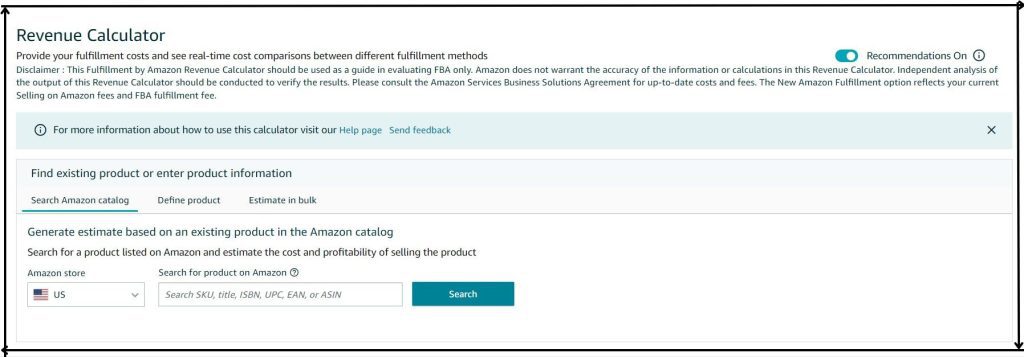
In Seller Central, access Revenue Calculator. This is a preview tool for comparing revenue estimates according to the fulfillment channel you used.
With this calculator, you can see the fees for each fulfillment option, then you can enter your estimated sales volume to get the total proceeds and approximate per-unit sold. You can use this tool for single or multiple products.
How Does Amazon Handle Sales Tax Collection For FBA Sales?
Amazon handles sales tax collection for FBA sales through its program called Amazon Tax Collection Services (TCS). Here’s how it works:
- Sales Tax Calculation: When you enroll in TCS, Amazon calculates and collects sales tax on your behalf for orders shipped to eligible states. They determine the applicable sales tax rate based on the buyer’s shipping address and the product category.
- Sales Tax Collection: Amazon automatically adds the appropriate sales tax amount to the customer’s order during checkout. The collected sales tax is then remitted to the respective state tax authorities by Amazon.
- Sales Tax Remittance: Amazon is responsible for remitting the collected sales tax to the appropriate state tax authorities on your behalf. They handle all the necessary reporting and payment processes, relieving you of the administrative burden associated with sales tax compliance.
- Seller Reporting: As a seller, you can access detailed sales tax reports in your Amazon Seller Central account. These reports provide information on the sales tax collected and remitted by Amazon for your FBA sales.
It’s important to note that while Amazon’s TCS handles sales tax collection and remittance, sellers are still responsible for ensuring that their products are properly categorized and for complying with any additional state-specific tax laws or requirements.
To ensure compliance, it’s recommended to consult with a tax professional or use third-party tax automation software that can help you manage and track your sales tax obligations across multiple states.
Below are two of the informative video we have to take you through the tax-related process when dealing with Amazon FBA sales and revenue
Playlist
What are the best product categories to focus on for Amazon FBA sales and revenue?
The best product categories to focus on for Amazon FBA sales and revenue can vary depending on various factors such as competition, market demand, and your own expertise. However, there are several categories that have historically performed well on Amazon. Here are some popular and profitable categories to consider:
- Electronics and Accessories: This category includes items like smartphones, tablets, headphones, and other electronic gadgets. It can be a highly competitive category, but it also offers high-demand products and potential for good profit margins.
- Home and Kitchen: Home and kitchen products, such as kitchen gadgets, cookware, home decor, and organizing solutions, are popular among Amazon shoppers. This category offers a wide range of products and can cater to different price points.
- Health and Personal Care: With a growing focus on health and wellness, this category includes products like vitamins, supplements, personal care items, and fitness equipment. It can be a profitable category due to the recurring nature of some products and the increasing demand for self-care products.
- Beauty and Personal Care: Beauty products, including skincare, cosmetics, and hair care, have a strong presence on Amazon. This category offers a wide range of options and can cater to various niches and target audiences.
- Baby Products: The baby products category, including items like diapers, baby gear, clothing, and toys, has a consistent demand. It can be a profitable category for sellers who understand the needs and preferences of parents and caregivers.
- Sports and Outdoors: This category includes fitness equipment, outdoor gear, sports accessories, and more. It can be a lucrative category, especially during peak seasons like summer and holidays.
- Toys and Games: Toys and games are popular products on Amazon, especially during the holiday season. This category offers a wide range of options and can cater to different age groups and interests.
You can use these as starting points and ensure to conduct thorough market research, analyze competition, and consider your own expertise and interests when selecting a product category. Additionally, keep in mind that Amazon’s policies and category restrictions may affect your ability to sell certain products.
Can I sell internationally on Amazon FBA and how does it impact my revenue?
Yes, you can sell internationally on Amazon FBA through programs such as Amazon Global Selling. This allows you to expand your reach and sell to customers in different countries around the world. Selling internationally can have a positive impact on your revenue in several ways:
- Increased Customer Reach: By selling internationally, you can tap into new markets and reach a larger customer base. This can result in increased sales and revenue potential as you are able to target customers in different countries.
- Diversification of Sales: Selling internationally helps diversify your sales channels. This means that if one market experiences a slowdown or seasonality, you may still have sales coming from other regions, reducing your reliance on a single market.
- Higher Demand: Certain products may have higher demand in specific international markets. By expanding internationally, you may find new opportunities where your products are in high demand, leading to increased sales and revenue.
- Currency Exchange Rates: Selling internationally can allow you to take advantage of favorable currency exchange rates. If your home currency is stronger than the currency of the country you are selling in, you may benefit from higher revenue when converting the foreign currency back to your home currency.
- Competitive Advantage: Selling internationally can give you a competitive advantage over sellers who only focus on domestic markets. It allows you to differentiate your brand, reach new customers, and potentially offer unique products that are not readily available in certain markets.
It’s important to note that selling internationally also comes with additional considerations and challenges, such as understanding local regulations, customs duties, shipping logistics, and customer service in different languages.
Meticulously research and understand the market conditions, cultural nuances, and legal requirements of the countries you plan to sell in before expanding internationally.
Amazon FBA Sales And Revenue Best Practices












Product Research
Conduct thorough market research to identify high-demand products with good profit potential. Consider factors such as competition, sales volume, and customer demand to select profitable products to sell.
Listing Optimization
Optimize your product listings by using relevant and targeted keywords in the title, bullet points, and product description. Include high-quality images and informative product details to attract and convert customers.
Competitive Pricing
Regularly analyze and adjust your pricing strategy to stay competitive within your market. Consider factors such as production costs, competitor pricing, and market demand to determine optimal pricing for your products.
Inventory Management
Maintain adequate inventory levels to meet customer demand and prevent stockouts. Utilize Amazon’s inventory management tools and analytics to forecast demand and ensure a steady supply of products.
Advertising and Promotion
Utilize Amazon’s advertising options, such as Sponsored Products and Sponsored Brands, to increase product visibility and drive sales. Additionally, consider running promotions and deals to attract customers and boost sales.
Customer Feedback and Reviews
Encourage customers to leave reviews and provide feedback on your products. Monitor and respond to customer reviews, addressing any issues promptly and professionally. Positive reviews and high ratings can enhance your product’s reputation and drive sales.
Branding and Packaging
Invest in creating a strong brand presence on Amazon. Develop a compelling brand story, design professional packaging, and provide a memorable customer experience to build trust and loyalty among customers.
Customer Service
Provide excellent customer service by promptly addressing customer inquiries and resolving any issues or concerns. Positive customer experiences can lead to repeat purchases and positive word-of-mouth.
Analyze Data and Metrics
Regularly analyze key performance metrics, such as conversion rates, click-through rates, and sales velocity, to identify areas for improvement. Use data-driven insights to optimize your Amazon FBA strategy.
Stay Updated with Amazon Policies
Keep up-to-date with Amazon’s policies and guidelines to ensure compliance. Failure to adhere to Amazon’s policies can result in account suspensions or other penalties that can impact sales and revenue.
Product Bundling and Cross-selling
Product bundling and cross-selling are effective strategies to boost sales on Amazon FBA. Identify complementary products, create attractive bundles, highlight benefits, optimize the listing, and use targeted keywords and high-quality images. Cross-sell by analyzing customer purchase patterns and suggesting related products that complement the item.
Here’s a playlist of Bundle Videos you can watch:
Playlist
Email Marketing
Email marketing significantly boosts Amazon FBA businesses by optimizing performance through targeted lists, personalization, value-added content, compelling subject lines, design, testing, analyzing, following guidelines, and automating campaigns.
Focus on customer engagement at various stages, continuously test and analyze campaigns, and follow Amazon’s guidelines for relevance.
Product Differentiation And Unique Selling Propositions For Better Amazon FBA Sales And Revenue?
- Research the market: Conduct thorough market research to identify existing products and competitors in your niche. Understand their strengths and weaknesses, pricing strategies, and customer reviews to gain insights into gaps and opportunities for differentiation.
- Identify customer pain points: Determine the specific needs, preferences, and pain points of your target audience. This will help you tailor your product to address those pain points and offer unique solutions.
- Unique features and benefits: Develop distinctive features or benefits that set your product apart from competitors. Focus on aspects that provide added value, solve problems, or improve the overall user experience. Highlight these unique features in your product listings and marketing materials.
- High-quality branding: Build a strong brand identity that resonates with your target audience. Create a brand story, logo, and packaging that convey the unique value proposition of your product. Consistently communicate this branding across your listings, images, and marketing campaigns.
- Optimize product listings: Craft compelling and informative product descriptions that highlight the unique features, benefits, and use cases of your product. Use high-quality images and videos to showcase its unique aspects. Incorporate relevant keywords and optimize your listings for better visibility in search results.
- Leverage customer reviews: Encourage customers to leave reviews and feedback on your product listings. Positive reviews that highlight the unique qualities and benefits of your product can reinforce its USPs and attract more customers.
- Provide exceptional customer service: Offer excellent customer support, quick response times, and hassle-free returns. This helps build trust, enhances the overall customer experience, and reinforces the unique value proposition of your product.
- Effective marketing and advertising: Implement targeted marketing strategies to reach your ideal customers. Utilize Amazon Sponsored Products ads, social media advertising, influencer collaborations, and content marketing to promote your product’s unique selling points.
How Do I Handle Returns And Refunds As An Amazon FBA Seller?
As an Amazon FBA seller, handling returns and refunds is an important part of your business. Here are the steps you can follow:
- Monitor returns: Keep an eye on your Seller Central account and regularly check for any returns initiated by customers.
- Check for automatic reimbursements: Amazon usually automatically reimburses sellers for returns within 45 days. However, if you notice that you haven’t received a refund for a returned item, you may need to request reimbursement.
- Request reimbursement: If Amazon doesn’t automatically refund you or if the item isn’t returned within 45 days, you can request reimbursement. Open a case with Amazon’s Seller Support and provide the necessary details, such as the Order ID and the reason for reimbursement.
- Determine sellable items: Amazon might return a sellable item to your inventory without reimbursement if a customer returns it within 45 days. However, if the item is not sellable, Amazon will determine who is responsible. If Amazon is at fault, they will reimburse you and not add the item back to your inventory.
- Unreimbursed returns: To identify unreimbursed returns, you can download reports from Seller Central. Use the “Payments” report under the “Reports” tab to view refunded products, and use the “FBA Customer Returns” report under the “Customer Concessions” header to determine whether returned items were refunded or not.
- Take action on overdue refunds: If an Amazon return has not been refunded after 50 days, you should open a case with Seller Support to request reimbursement.
- Expedite the process: To speed up the reimbursement process, you can split your Order IDs into batches of 10-15 and investigate each batch in a separate case. This allows Amazon to attend to each batch more quickly.
Supplementing Amazon FBA Sales and Revenue
Is it possible to earn on Amazon without (a significant amount of) Investment?
Yes, it is possible to earn money on Amazon without making a significant upfront investment. Here are a few ways to do so:
- Retail Arbitrage: Retail arbitrage involves purchasing products from physical retail stores at a lower price and reselling them on Amazon for a profit. This method requires some initial capital to purchase inventory, but it doesn’t require a large investment to get started.
- Online Arbitrage: Similar to retail arbitrage, online arbitrage involves sourcing products from online retailers or marketplaces at a discounted price and reselling them on Amazon. You can take advantage of deals, discounts, and clearance sales to find profitable products.
- Dropshipping: Dropshipping allows you to sell products on Amazon without holding any inventory. When a customer places an order, you purchase the product from a third-party supplier who then ships it directly to the customer. This eliminates the need for upfront inventory investment.
- Kindle Direct Publishing (KDP): If you have writing skills or expertise in a particular niche, you can self-publish eBooks through Amazon’s KDP platform. This allows you to earn royalties from eBook sales without any upfront investment.
- Merch by Amazon: Merch by Amazon is a print-on-demand service where you can design and sell custom t-shirts and other apparel. You create the designs, and Amazon handles the printing, shipping, and customer service. This requires no upfront investment, but you need to invest time and effort in creating appealing designs.
- Amazon Associates Program: The Amazon Associates Program allows you to earn commissions by promoting and referring customers to Amazon products through affiliate links. You can create a website or blog, write product reviews, and earn a commission when someone makes a purchase through your referral link.
While these methods don’t require a large initial investment, they do require time, effort, and knowledge to be successful. It’s important to research and understand each method thoroughly, identify profitable opportunities, and continually optimize your strategies to maximize earnings on Amazon.
Grow Amazon FBA Sales and Revenue
To help improve your Amazon FBA sales and revenue, here’s a video from My Amazon Guy’s founder, Steven Pope, where he shares his expert tips.
Conclusion
Maximizing Amazon FBA sales and revenue requires dedication, strategic planning, and continuous improvement.
To succeed, optimize product listings, leverage Amazon advertising, prioritize customer reviews, embrace cross-selling, product bundling, and global selling, monitor performance metrics, and prioritize outstanding customer service.



